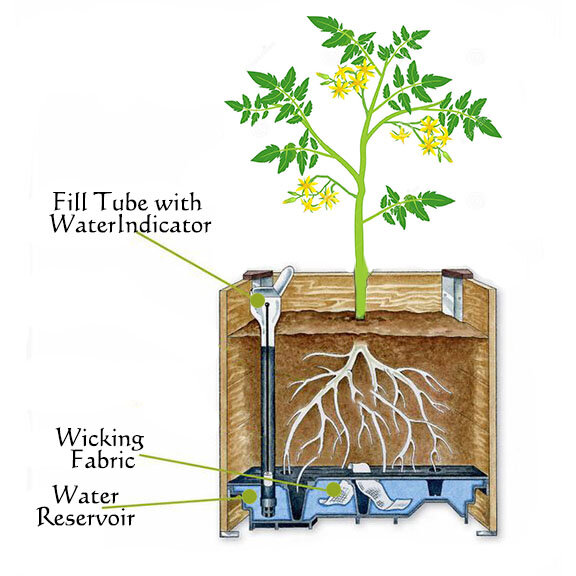Self-Watering Planter Boxes
Why not have a beautiful planter box that can even save you water and keep your plants healthy? Self-watering planter boxes are any garden veggies best friends and who wouldn’t want their fresh greens right outside your door? Growing your own garden or enjoying beautiful flowers in your backyard comes with some commitment, almost like having a pet. You can’t just leave your plant babies by themselves and go on vacation for a few weeks without thinking of who is going to water your plants while you are gone.
You might wonder how do these super functional pretty planters work? Here is your answer: Self-watering planters consist of a growing bed, potting soil, a watering reservoir and wicking system ( also referred to as capillary action) that puts the soil in contact with the water, self-watering pots work through capillary action, or wicking. A consistent level of moisture is guaranteed with a system like this. Let’s take a close look at each element to make these planters work:
The GROWING BED is the upper part of the planter where your soil and plants live
You need to use POTTING SOIL that is lightweight and absorbent. Best would be a soil that keeps wicking up water while also providing the right amount of oxygen for the roots
The WATERING RESERVOIR is located right underneath the growing bed. Remember that even though this system is very sufficient, you still will have to refill it with water every so often, a vertical pipe attached to the reservoir or an opening at the side will do the trick.
The WICKING SYSTEM is the most important element in your sel-watering planter system. This system will deliver the water from its reservoir to the plants. You can use wicks made of any absorbent material such as cotton, wool, felt, nylon, polyurethane, and microfiber.. One end is placed in the water and the other in the soil. A material that can last long and is durable would be your best bet though (fiberglass wicking is an excellent choice). Make sure that the material is always reaching into the water, even if the water levels are low. The wicks should also extend into the potting soil rather than just sitting on the bottom of the growing bed.
If you have a busy lifestyle but still want to enjoy the perks of some fresh garden greens or beautiful plants these planters are a MUST HAVE.
Here are some additional useful tips:
This might be a given but also the easiest to forget: DO NOT LET YOUR RESERVOIR DRY OUT
Fertilize your pot. We do not recommend you using liquid fertilizer since it might result in some build up of fertilizer salt. Compost will be your best friend. Add some well-aged sterile compost in your potting soil, and repot with a fresh batch of potting mix each planting season.
Get potting soil that is specifically used for self-watering planters.
Happy planting!
WICKING SYSTEM

